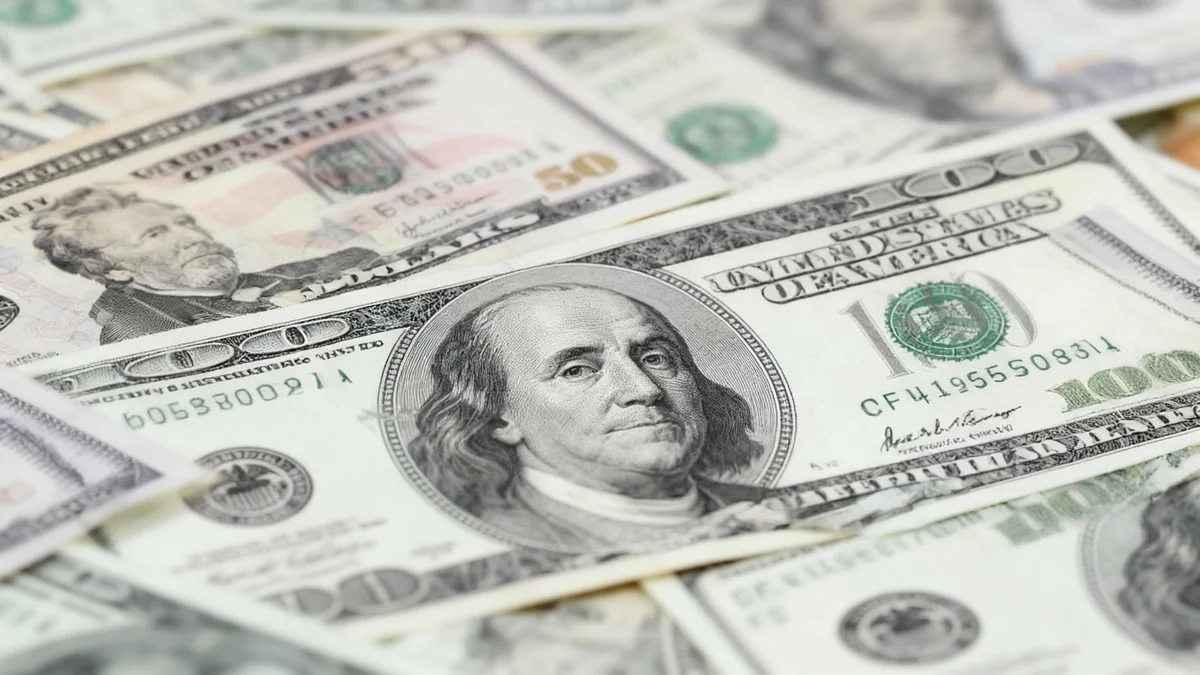The U.S. dollar posted modest gains on Monday, influenced by easing trade tensions and contained domestic financial concerns. However, the broader market narrative was dominated by a significant rally in precious metals, with both gold and silver climbing sharply as investors sought safe-haven assets amid ongoing political and economic uncertainty.
Key Takeaways
- The U.S. dollar index (DXY) increased by 0.15%, supported by positive remarks on U.S.-China trade relations.
- Gold and silver prices rallied significantly, with gold closing up 3.47% as investors flocked to safety.
- The euro weakened following a credit rating downgrade for France and disappointing German economic data.
- The Japanese yen lost ground as Tokyo's stock market hit a record high, reducing demand for safe-haven currencies.
Dollar Finds Support Amid Mixed Signals
The U.S. dollar strengthened at the start of the week, driven by a perception of reduced risk in global trade. Comments from President Trump suggesting a positive outcome in discussions with China helped bolster the currency. This sentiment was further supported by news that alleged loan fraud issues impacting Zions Bancorp and Western Alliance Bancorp appear to be isolated, easing fears of wider contagion in the banking sector.
However, the dollar's advance was capped by several underlying factors. A strong rally in the stock market curbed the demand for the dollar as a liquidity haven. More significantly, the ongoing U.S. government shutdown continues to cast a shadow over the economy, with concerns growing that a prolonged stalemate could negatively impact growth.
Fed Rate Cut Expectations
Market sentiment overwhelmingly points toward further monetary easing from the Federal Reserve. Current pricing indicates a 99% probability of a 25-basis-point interest rate cut at the next FOMC meeting scheduled for October 28-29.
Euro Falters on Economic and Credit Concerns
Across the Atlantic, the euro faced downward pressure, with the EUR/USD pair falling by 0.09%. The currency's weakness was triggered by two key developments. Late last week, S&P Global Ratings downgraded France's sovereign credit rating to A+ from AA-, citing elevated budget uncertainty. This move has introduced fresh concerns about the fiscal stability of one of the Eurozone's largest economies.
Compounding the issue, new data from Germany revealed a drop in producer prices. The German Producer Price Index (PPI) fell by 0.1% month-over-month in September, contrary to expectations of a 0.1% increase. This sign of easing price pressures is considered a dovish signal for the European Central Bank (ECB), suggesting little impetus for monetary tightening.
Diverging Central Bank Paths
The currency markets are closely watching the different policy trajectories of the world's major central banks. While the U.S. Federal Reserve is widely expected to continue its rate-cutting cycle, the ECB is largely seen as having reached the end of its easing measures. This divergence is a key factor influencing the EUR/USD exchange rate.
Yen Weakens as Japanese Stocks Soar
The Japanese yen experienced a slight decline, with the USD/JPY pair rising by 0.06%. The yen's weakness was primarily a result of a risk-on mood in Japanese markets. The Nikkei Stock Index surged by over 3% to reach a new record high, which significantly dampened the appeal of the yen as a safe-haven asset.
Political developments in Japan also contributed to the currency's movement. The ruling Liberal Democratic Party's new coalition pact has increased the likelihood of Sanae Takaichi becoming prime minister. Her known support for expanded financial stimulus has led to concerns about an increased supply of government debt, weighing on the yen.
"I believe that now is a prime opportunity for the BOJ to raise the policy interest rate as the price stability target has been almost achieved," stated BOJ Board member Takata, offering a hawkish counterpoint that helped limit the yen's losses.
Precious Metals Shine as a Safe Haven
The standout story of the day was the powerful rally in precious metals. December COMEX gold soared by $146.10, a 3.47% increase, while December COMEX silver jumped $1.271, or 2.55%. Both metals are now trading just below their recent record highs.
This surge in demand is fueled by a confluence of uncertainties:
- The ongoing U.S. government shutdown is driving investors toward assets perceived as safe.
- Lingering geopolitical risks and unresolved trade disputes continue to support haven demand.
- Expectations of further interest rate cuts by the Federal Reserve make non-yielding assets like gold more attractive.
Investor interest is reflected in fund flows. Holdings in gold-backed ETFs recently reached a three-year high, while silver ETF holdings climbed to a 3.25-year peak, indicating strong institutional and retail buying of precious metals as a hedge against volatility.





